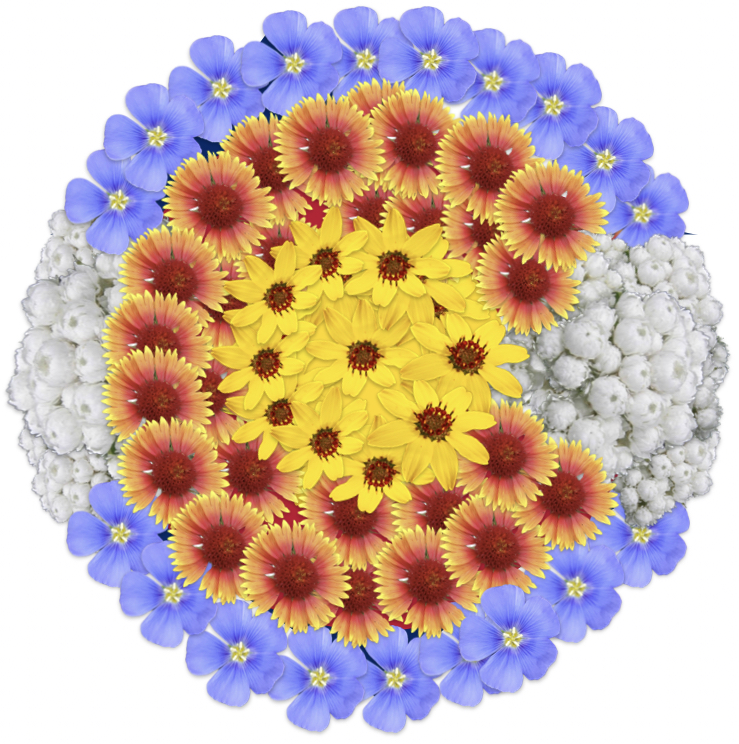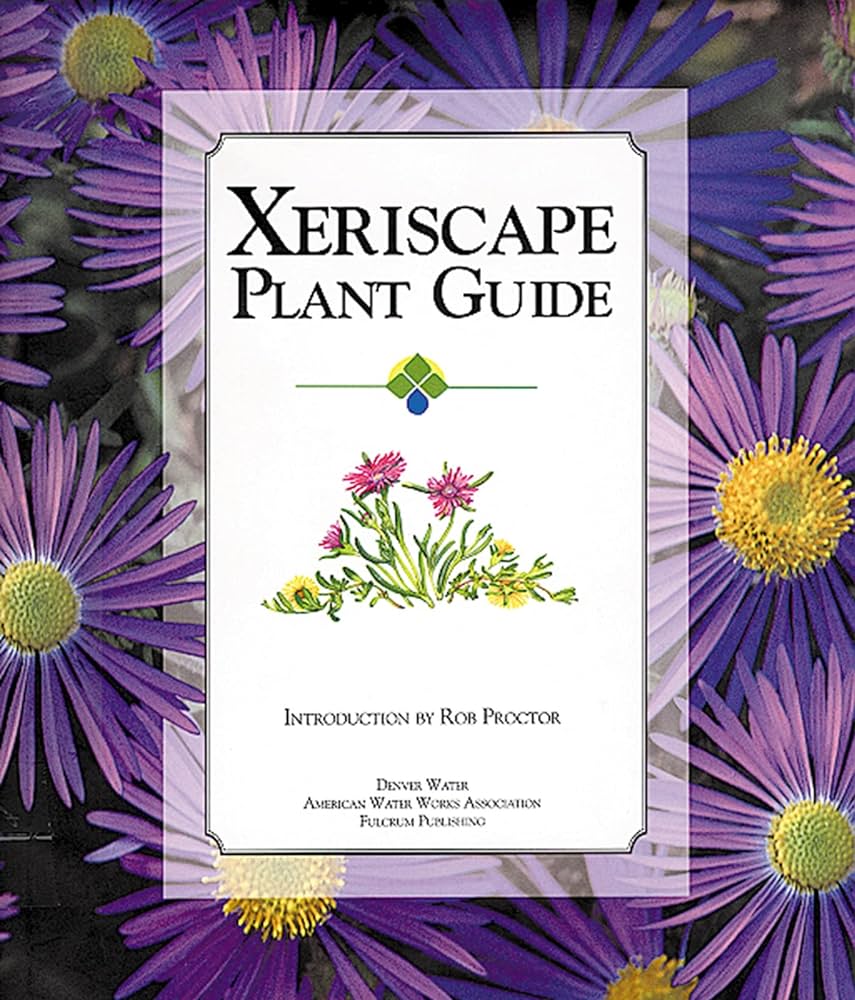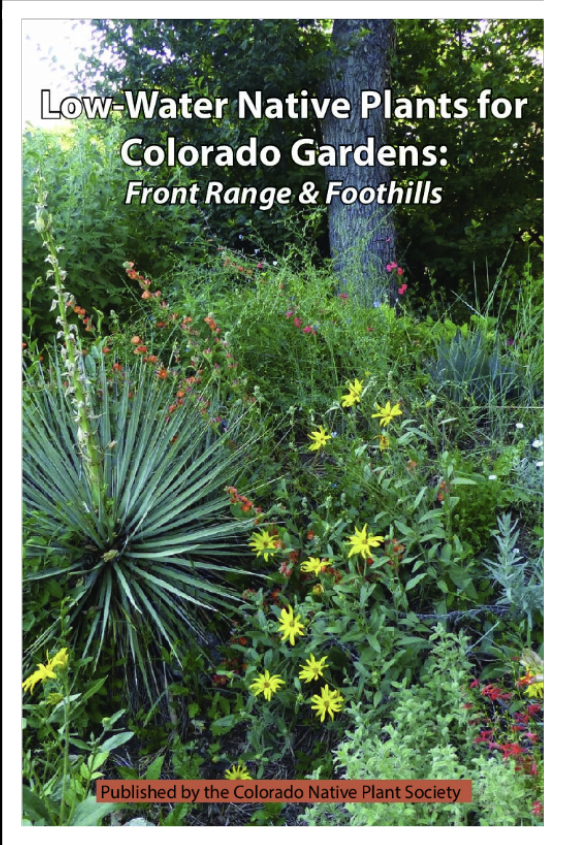By Richard Phillips
In the dry steppe environment of eastern Colorado, for years we have been directed to reduce the water consumption of our landscaping by using the Xeriscaping guidelines developed and promoted by Denver Water, since the 1980s. These concepts have been so ingrained in our gardening ethic, that I see them referenced in gardening literature and guidelines in Fort Collins, Boulder, Denver, Aurora, Colorado Springs and a multitude of other Front Range cities. Nurseries advertise plants that meet Xeriscaping standards. Water providers promote the use of Xeriscaping in their lawn replacement rebate programs. It’s now time to replace the term Xeriscaping with the more modern concept of Coloradoscaping, which promotes the use of regionally native plants to take advantage of their inherent low-water needs and many other ecological benefits1.

Let’s start with a short history of the Xeriscaping concept. Xeriscaping is the term coined by Denver Water back in 1981 for a landscaping technique that prioritizes water conservation. One of the primary tenets of Xeriscaping is to plant grasses, flowers, shrubs and trees that only need minimal water to thrive. As we all know, that’s a primary characteristic of most plants native to the Front Range. However, plants adopted by the practitioners of Xeriscaping include drought-resistant plants from other regions of the United States and even from other parts of the world, typically from regions that have an arid steppe climate like Denver.
For example, the classic, beautifully illustrated, Xeriscape Plant Guide, published in 1996, by Denver Water and others, includes details on 123 plants that thrive in this climate (the subtitle says “100 Water Wise Plants,” so you actually get 23 bonus plants!). The chosen plants include 76 non-natives and only 47 natives. The Trees and Shrubs section lists 24 non-natives and 19 natives, including the popular non-native Blue Mist Spirea (Caryopteris clandonensis) from Asia and the native Saskatoon Serviceberry (Amelanchier alnifolia). The Perennials and Vines section lists 16 non-natives and 13 natives including the non-native Basket of Gold (Aurinia saxatile) with bright clumps of yellow flowers from the Mediterranean region and the native Bluebell (Campanula rotundifolia). The Groundcovers and Grasses section lists 16 non-natives and 7 natives, including the ubiquitous Karl Foerster Grass (Calamagrostis acutiflora) from Europe and the Colorado State Grass, Blue Grama (Bouteloua gracilis). The Annuals section includes 7 non-natives and only 3 natives.

As a side note, there is a group of plants chosen and developed because they meet the Xeriscaping guidelines. These plants are developed and marketed under the registered trademark of Plant Select. These cultivars are selected, bred and promoted by a collaboration between Colorado State University, Denver Botanic Gardens and professional horticulturalists. Many of the plants in this collection are not native to Colorado or even North America. You can see this trademark on plants sold at nurseries along the Front Range.
So, Xeriscaping sounds like a great concept if your only concern is water conservation. Coloradoscaping takes the concept to a new level, by focusing on landscaping with regionally native plants that are (mostly) inherently low-water users, but also contribute to the local ecosystem by supporting native insect populations, which are the basis for the natural food chain – plants, to insects, to birds and other small animals, to predators. Entomologists, such as Douglas Tallamy, who wrote Nature’s Best Hope and Bringing Nature Home, have been educating us in the last decade on the basic concept that local insects are adapted to feed and breed on the local plants with which they evolved. They generally prefer native, local plants, which host more native insect pollinators than any non-native. The loss of native plants has been a large contributor to the dramatic reduction in insect and bird populations that have been recorded in the last 50 years.
The full definition of Coloradoscaping can be found on the Wild Ones Front Range Chapter website. The definition states in part:
“Coloradoscaping emphasizes the use of plants that are native to the state of Colorado and the Western US, inherently thrive in Colorado’s different climates and conditions, and celebrate Colorado’s natural beauty. Choosing plants that are adapted to a site’s soil conditions and climate provides greater resilience and can reduce, or even eliminate, the need for supplemental watering, soil amendments, fertilizer, and pesticides. This means less labor and lower maintenance costs.
Native plants are more apt to provide the host plants and essential food sources that Colorado’s declining bird and insect populations need for survival, therefore they are the first choice for supporting biodiversity. Many of the plants native to Colorado and the Western US also have extraordinarily deep root systems which help draw carbon out of the atmosphere, retain soil moisture, and mitigate flooding to make communities more resilient to the impacts of climate change.“
It is unclear who or what organization coined the term Coloradoscaping. To my knowledge, no one has stood up to say, “it’s my term.” I first heard it from a speaker at a conference on reducing water usage in Colorado landscapes, primarily attended by municipal water providers. When asked, the speaker said he did not originate the term and didn’t know who did. He also did not have a formal, fully developed definition of the term, other than it called for the use of plants adapted to Colorado’s climate. The Wild Ones Front Range Chapter decided to fully develop the term, as noted above, to fit our desire for how it should be defined.
One important thing to keep in mind when applying Coloradoscaping concepts to various locations around the state is that different plants are adapted to different locales in the State. For example, you don’t want to be using plants native to the high elevations of the Western Slope in the lower elevations of the Front Range, although there is some overlap. Each area has its own microclimate and different plant species and insect communities. You can check CSU’s Guide to the Ecological Systems of Colorado; it lists plants organized by habitat, not zipcode. The National Wildlife Federation and Audubon Society also have websites to check whether a plant is native to a particular area. (Note that these websites use zip codes, which is not always helpful for high altitude dwellers.) Their accuracy is down to the county level. The best resource for checking whether a plant is native to Colorado is Flora of Colorado, by Jen Ackerfield. Pricey, but it’s a great go-to resource.
The Coloradoscaping community does not have multiple glossy how-to guides for plant selection and garden design like the much better funded Xeriscaping proponents. However, there are very helpful resources available that give you all the information you need to get started, or even to advance your knowledge, if you are already a practitioner.
In my opinion, the best, most thorough and concise guides are the five pamphlets published by the Colorado Native Plant Society covering Low-Water Native Plants for Colorado Gardens. Each guide covers a geophysical/sub-climatic region of the State: Southeastern Colorado, Prairie and Plains, Front Range and Foothills, Western Slope Below 7,000’, Mountains 7,500’ and Above. Each guide has a list of recommended plants, a discussion of local soils and microclimates, sample garden plans and other information needed for planting and maintaining your garden. The booklets were published in 2017, long before the term Coloradoscaping was introduced, but their titles could just as well be changed to “Guides for Coloradoscaping Your Gardens.” The booklets may be viewed on the Wild Ones Website, or purchased from the Colorado Native Plant Society Bookstore.


Another excellent source of information is the Coloradoscaping with Native Plants Toolkit on the Wild Ones Front Range Chapter website. This is an evolving resource with lots of information for the beginner to advanced gardener. There are sections on landscape design, selecting plants, site preparation, sources for plants and seeds, and much more. One unique feature of the Toolkit is its inclusion of information for the person who wants to save money and grow their plants from seed. As could be expected, the focus is on Front Range gardening.
Maybe someday Coloradoscaping will be as recognizable a term as Xeriscaping, but at present it is relatively unknown. Due to its ecological benefits to the local environment, it is important that it be taken seriously and its application is advanced in the public and private sectors. This is something that the average homeowner or government entity can apply and aid in their small way to fighting global warming, water resource depletion and ongoing habitat destruction for native plants and their associated native insect life. We can all then contribute a few hundred square feet of our own property to Douglas Tallamy’s Homegrown National Park.
Curious to learn more about transforming your garden into a habitat with Colorado native wildflowers, grasses, shrubs, and trees? Check out our native gardening toolkit, register for an upcoming event, subscribe to our newsletter, and/or become a member – if you’re not one already!
- Some native plants have higher water requirements since they have adapted to naturally wetter areas, such as waterways. Always research your plants needs to find the best matches to the microclimates in your landscape. ↩︎
